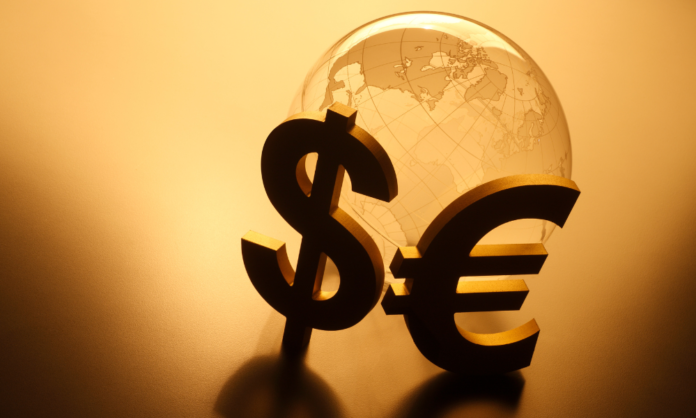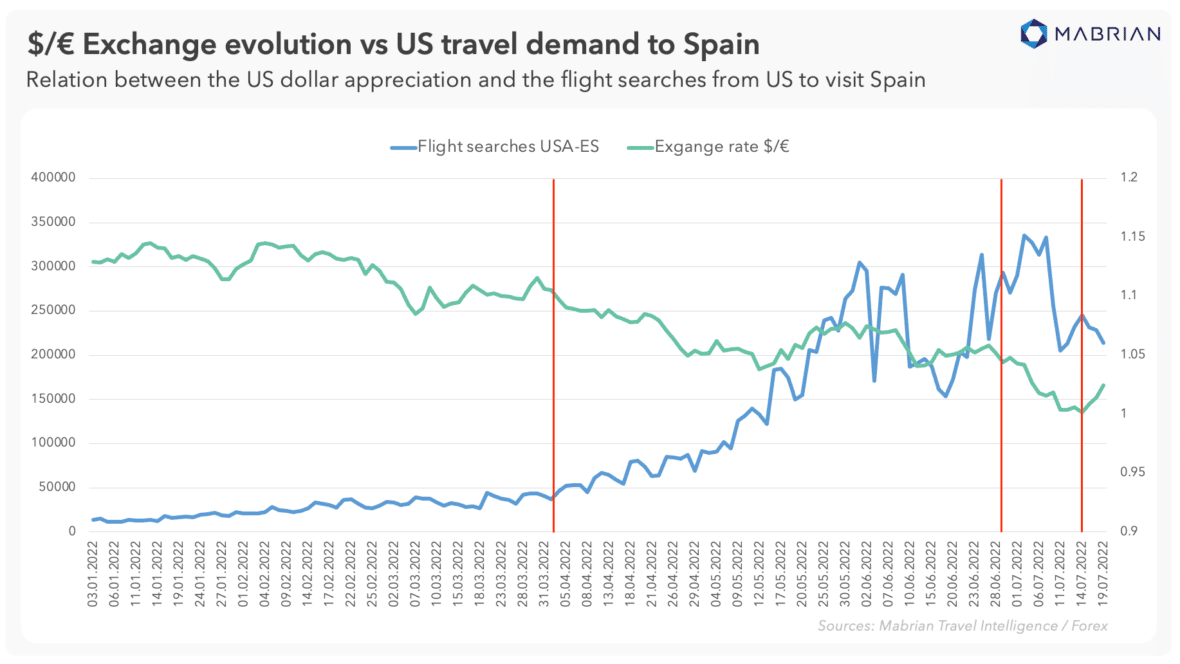
Carlos Cendra Cruz, Sales & Marketing Director of travel intelligence provider Mabrian comments: “We have had a close look at the relationship between the Euro/Dollar exchange rate and the level of search demand for flights from the US to Europe over the course of this year.
“Whilst you might expect to see greater demand for Europe as the summer months approach, we can nonetheless see a very clear correlation between the value of the Euro and demand for travel – with clear periods where an increase in the cost of acquiring a Euro results in a fall in demand for flights to Europe, and vice versa.
“Aside from telling us that right now European hotels should be marketing themselves hard to US travellers, very clearly this shows us that hotels and tourism boards around the world should factor in – amongst other important elements too – exchange rates when considering where to focus their marketing funds.
“But we shouldn’t forget though that this cuts both ways and no one should become over-reliant on any one market where a sudden shift in exchange rates – or as this research shows even a relatively small shift – can result in massive decreases in demand.”

Paloma Real, general manager of Mastercard Spain comments: “Before the pandemic, the United States was one of the most important source markets for the Spanish tourism sector in terms of both the number of visitors (3.2 million in 2019) and spending (€6,774 million). Tourists from North America have an average expenditure twice as high as that of European tourists (2,087 euros on average vs. 1,175 euros for German tourists, 1,115 euros for UK tourists or 763 euros for French tourists). This is mainly due to the fact that, when travelling by long-haul, tourists from North America usually spend more days in the destination and travel on a larger budget than Europeans entering our country by road and/or shorter-haul flights.”
“Due to the pandemic, the US-Spain corridor has been one of the destinations most affected by the restrictions, and the number of visitors has dropped significantly (1 million visitors in 2021). With the end of the restrictions and the fall of the euro against the dollar, it is expected that in 2022 the number of visitors and spending will be close to those of 2019. The euro-dollar peg is expected to be a lever to accelerate the recovery of visitors to the country and average visitor spending.”
“On the other hand, we see this trend confirmed by the fact that more and more tourist destinations are relying on Mastercard to develop special experiences and promote them to source markets through our priceless.com platform. As a result, they are accelerating the recovery of the tourism sector in their destinations.”





